Environment and Culture of Filipinos During the Stone Ages (Part 1)
(Part 1)
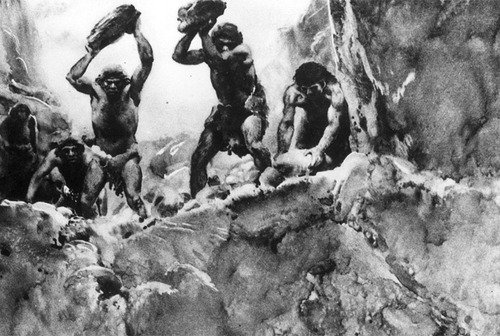
Image Source
In a similar Visayan myth, which included the winged animal Manaul, it is informed that subsequent to consummation the battle of Kaplan and Magauayan, the legendary fowl traveled to a woods of bamboos. As he was resting, Manaul heard a dismal voice requesting that he free the creatures caught inside the bamboo. Revealing to Manaul that on the off chance that they were freed, those caught would help him "keep peace in your new earth", the fledgling pecked at the bamboo until it split in two. Out came Si-Kalao, the primary man; and Si-Kalay, the principal lady. Manaul got alarmed by the new animals; consequently, he promptly took off and stayed away forever.
Myths of the source of the primary man and lady in the Philippines have changed variants relying upon what ethnic gathering's record is to be listened. Obviously, these stories in any event give reply to the inquiries: Who were the main individuals in the Philippines? How could they develop?
The rise of man has been a fight between the Creationists (battle that God is the producer of man) and the Evolutionists (battle that man is a result of slow changes starting with one specie then onto the next, all of which follow their root from a solitary cell). The level headed discussion on this matter holds on until today. Both creationism and evolutionism give answers to how individuals developed in this world.
Paleolithic and Neolithic Cultures of Filipinos
The tale of man in the Philippines backpedals to the Pleistocene Epoch, which has been dated from 1 to 3 million years. This period was set apart by climatic changes that significantly re-molded the world's surface. Amid the stature of this chilly period, the level of the surface of the seas of the world went down. Immense territories of land beforehand secured by water ended up noticeably dry land. The mainland rack of Asia or the Sunda Shelf was uncovered. Arrive spans showed up between the northern Philippines and Taiwan. Mindanao Island was associated with Borneo, which thus was associated with Celebes. It was amid this tumultuous period when nature seems to have gone on the frenzy, that man showed up apparent.
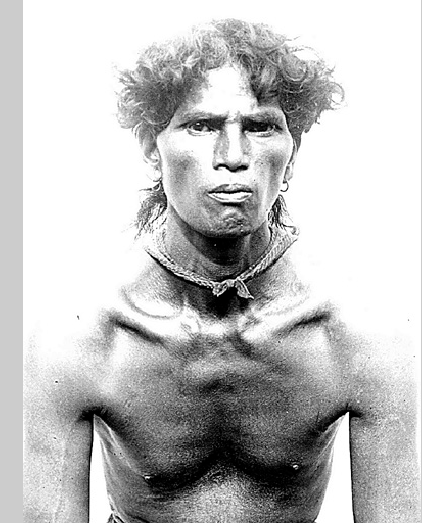
Image Source
Cagayan Man
The soonest prove for the nearness of individuals in the Philippine archipelago showed up in Cagayan Valley. These were as stone instruments found in a similar shake arrangement as fossils of a wiped out elephas (overshadow elephant). These go back to between 9 to 7 million years or generally somewhere in the range of 750,000 years prior. Somewhere else on the planet as in Indonesia and China the Homo erectus species were dated to at about this age and more established. Later populace hereditary qualities thinks about recommended that around 50,000 years prior some Proto-malay populaces showed up in the nation: the Mamanua of Lake Mainit; and between 30,000 to 20,000 years back the Negrito showed up. Confirmations indicate two streams, one - likely more established, is a development along the eastern side of the archipelago and going more distant north along the drift, while the later one coming through Borneo and Palawan influenced the western side of the Philippines including Luzon. The Austronesian (from South China) populaces of the archipelago demonstrated their nearness between 6,0 to 7,000 years B.C.
The announced nearness of fossils of stegodon (an elephant bigger than the elephas), elephas and rhinoceros in Cagayan Valley, Pangasinan, Rizal, Novaliches, Quezon City, Iloilo, Zamboanga, and Sulu prompted the hypothesis that amid the tallness of the last Ice Age when the level of the surface of the ocean went down, submerged edges were presented to associate these islands to the mainland of Asia. Also, over these land connects, these substantial creatures moved looking for nourishment into this region. Later when the ice in the Polar Regions dissolved with the subsequent ascent of the level of the ocean, the land spans wound up plainly submerged yet again removing the associations with the landmass and framing the chain of islands referred to now as the Philippines.
In Cagayan Valley where fossils of those creatures specified were discovered, researchers have revealed sections of stones that had all the earmarks of resembling those utilized by old men as devices in different parts of the world, as in Indonesia (Java Man) and China (Peking Man). On the off chance that for sure these stone sections were apparatuses, then this is a proof that man possessed the Philippines when such creatures above-expressed meandered Cagayan. This species is known as Homo Erectus (erect man). Up to the present, in any case, no remaining parts of the Cagayan Man have been found and the main evidences of his nearness are the stone apparatuses that he made and utilized, and the remaining parts of the creatures that he butchered.
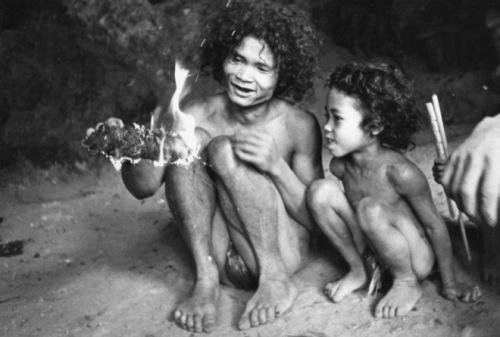
Image Source
It is speculated that the Cagayan Man lived with a little gathering. In addition, the Cagayan men more likely than not lived as foragers—seeker gatherers—depending to a great extent on wild creatures, shellfishes and fishes, wild foods grown from the ground. At this stage, the Cagayan man did not know how to raise crops for nourishment; nonetheless, it is likely that he as of now had some thought of how plants develop and increment from watching nature. When he uncovers a tuber, for instance, he would see later that the vine from which he got it would again develop after some time and deliver different tubers. He then helps nature by returning to the dirt the finish of the vine from which he got the tuber for it to develop different tubers once more. This is a basic sort of plant development that more likely than not been drilled by the early people groups to add more to their sustenance sources. From practices like these following a large number of years would lead finally to the training of various plants and the planting of whole fields with numerous sorts of yields.
With respect to, it is trusted that the Cagayan man's dress comprised of the least difficult materials got from their condition, which could be from plants. While a gathering would involve one substantial region where they move about through a season. It is plausible that they utilized one place as a pretty much lasting home from which they move about in their day by day exercises, and to which they return for the night. In a few places the helpful locales would be shake safe houses and edges, or mouths of hollows where it is dry and get enough light. A stone shade that can give assurance from the rain and direct daylight, and close to some water sources would be perfect. In spots where there are no holes, living zones are made between support underlying foundations of substantial trees with vast leaves for material or something comparable.
The relatives of each gathering would settle down close to each other. Any place the living range is made, a water source is constantly close-by for this is required for drinking or washing, as well as spots where nourishment can be assembled effortlessly like fish, snails, frogs, tadpoles, crabs, shrimps, and where different creatures go to drink. Amid specific circumstances of the year when nourishment assets end up plainly accessible in spots more distant on, the gathering may leave their place of living to different campgrounds where they spend a couple days before again coming back to their picked home region. This home place is the place a great part of the social exercises are held, since the day by day nourishment gathering work is generally family activity.
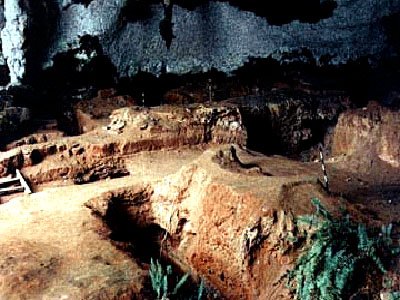
Image Source
Tabon Man
The most punctual proof of Homo Sapien (present day man) in the Philippines is that of the Tabon Man of Palawan. Dr. Robert B. Fox, heading the National Museum group, found the human fossil in a collapse Lipuun Point in the region of Quezon, Palawan. The give in was named Tabon after the vast footed winged creature that lays eggs in tremendous gaps it delves into buckle floors, a number of which have been found in the surrender. The fossil is made out of a skullcap or the frontal skull bone, two parts of jawbones and a few teeth. The arrangement of fossils propose that there are no less than three people. The skullcap is that of a youthful individual, most likely female. The layer where the fossils of the Tabon Man were found has been dated to 16,000 years of age, which likewise gives the age of the fossils. A fossilized tibia has been dated to 47,000 years of age - the most established Homo sapiens to date, at any rate, in Southeast Asia.
The Tabon Cave, truth be told, was populated by people groups sooner than Tabon Man, since stone apparatuses were there again to demonstrate this. The most profound soil store of the give in was dated to around 50,000 years of age, and the most youthful to around 10,000 years. This demonstrates the buckle was utilized ceaselessly for around 40,000 years by people groups that utilized a similar sort of apparatuses. The most punctual carbon 14 date got for the Tabon Cave was around 30,000 years B.C. from charcoal example, which among others propose the soonest date for the utilization of the fire in the Philippines.
The way the devices were made was precisely the same as those found in the Cagayan Valley around 700,000 years prior: the littler chip devices and the bigger stone cobble devices. There was anyway, one distinction. In Cagayan Valley, there were a greater amount of the expansive sorts of stone apparatuses. In the Tabon Cave, there were short of what one percent of the rock cobble apparatuses contrasted with the chip devices. This has been interpreted as meaning that the bigger number of vast stone apparatuses in Cagayan was because of the diverse needs in that place when contrasted with Palawan. In the Tabon Caves, the archeological stays tend to demonstrate that the early people groups here were getting a greater amount of little creatures, bats and flying creatures that live in the give in itself, consequently there was less requirement for bigger sorts of devices.
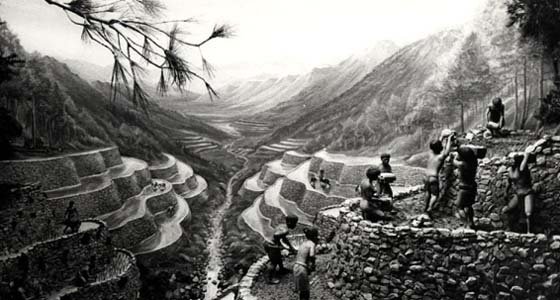
Image Source
Other Stone Age Sites
In Cagayan Valley, archeological burrows proceeded on the eastern side in the district of Peñablanca. Here many hollows were found to contain ancient materials. Among the more essential of these was the Laurente Cave. In the second layer of the surrender floor were chipped stone apparatuses, squander drops, consumed and unburned bone pieces and shells. The date got from the charcoal materials was around 16,000 years B.C. The most essential find here is the confirmation of the soonest utilization of flame in Northern Luzon. Another site is the Musang Cave, which again contained drop devices, shells and creature bones, all of which were dated to around 11,000 years B.C. Other Old Stone Age destinations have been revealed in the Philippines demonstrating that ahead of schedule in time, the islands were at that point inhabited.
In Central Philippines, an archeological site in Samar with little stone drop and bone instruments was dated to 10,000 years. More remote south, in the island of Sanga-sanga where there were clearly rare stone materials, the shell of the mammoth mollusk was utilized to frame chip devices, which have been dated to around 6,000 years of age. This apparatus custom proceeded being used even in later circumstances and have been discovered together with stoneware, cleaned stone adzes and other later materials in numerous other archeological destinations. At about this time between 11,000 to 7,000 years or somewhat prior, the level of the ocean achieved the present stage, and new and diverse culture characteristics started to show up, demonstrating changes in the life of the general population.

Image Source
Source:
Philippine History
By: Zeus Salazar